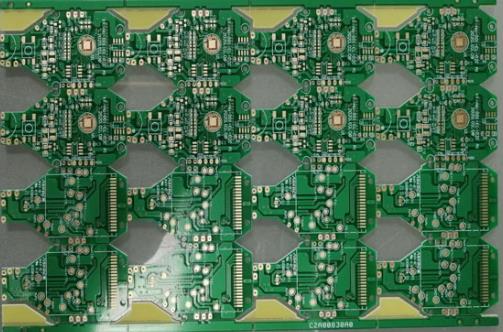Let me share with you the knowledge points that you must know in PCB design capacitors, and look forward to having an effect on your PCB design.
Decoupling capacitor: near the power supply
Bypass capacitor: The root of the power supply pin of the chip, 10-0.1-0.01uF capacitor group, used to filter high-frequency noise and prevent yourself from affecting others. The large capacitor is responsible for the low frequency band, and the small capacitor is responsible for the high frequency band. 10uF/0.1uF, 4.7uF/0.01uF, 10uF/0.01uF
In addition, the role of large capacitors is to store and stabilize charges, while the role of small capacitors is to short-circuit high-frequency noise.
About bypass capacitor routing
Go through the large capacitor first, and after the small capacitor
The small capacitor is close to the power pin of the chip, and the large capacitor is close to the small capacitor
The capacitor grounding point of the capacitor bank must be the same ground plane

Connect to a large, low-resistance ground plane
You need to pay attention to prevent high-frequency energy from entering the chip from the beginning, half of which is completed by a combined electrolytic capacitor (low frequency decoupling) ceramic capacitor (high frequency decoupling)
Pay attention to polarity and withstand voltage
In the case of high frequency, the distributed capacitance of the wiring on the printed circuit board will play a role. When the length is greater than 1/20 of the corresponding wavelength of the noise frequency, an antenna effect will occur, and the noise will be emitted through the wiring.
Therefore, in a high-frequency circuit, don't think that if you connect the ground somewhere to the ground, this is the "ground". Be sure to punch holes in the wiring with a pitch less than λ/20 to "good ground" with the ground plane of the multilayer board.
Classification of commonly used capacitors
The selection of capacitors should be cautious. Generally, you can choose more well-known capacitor brands, such as TDK capacitors, Yageo capacitors, etc., as a guarantee of quality.
(1) Aluminum electrolytic capacitor
Aluminum electrolytic capacitors are polarized capacitors, and its "+" pole must be connected to the end with a higher potential in the circuit.
Advantages: large capacity, able to withstand large pulsating current.
Disadvantages: large capacity error and large leakage current; ordinary electrolytic capacitors are not suitable for high-frequency and low-temperature applications, and should not be used at frequencies above 25kHz.
Purpose: low frequency bypass, signal coupling, power supply filtering.
(2) Tantalum electrolytic capacitor
Tantalum electrolytic capacitors are also polar capacitors.
Advantages: temperature characteristics, frequency characteristics and reliability are better than ordinary electrolytic capacitors, especially the leakage current is very small, the life is long, the capacity error is small, and the volume is small, and the maximum capacitor voltage product can be obtained per unit volume.
Disadvantages: poor tolerance to pulsating current, short circuit if damaged, higher price.
Uses: It can replace aluminum electrolytic capacitors in many occasions and used in ultra-small high-reliability equipment.
(3) Monolithic ceramic capacitors
It is the most used capacitor at present.
Advantages: temperature and frequency stability are very good, low loss, long life.
Disadvantages: Can not be made into large-capacity capacitors.
Purpose: high frequency filtering, oscillation and coupling, etc.
Capacitive reactance
Capacitors play a very important role in the circuit, which is to pass AC and block DC. If a DC voltage is applied to one end of the capacitor, after the capacitor is stabilized (that is, after the charging and discharging process is completed), the voltage cannot be felt at the other end of the capacitor, that is, the DC is isolated. This is also possible from the RC charging and discharging circuit It can be seen; if the input Vi is an AC signal, Vo will output an AC signal of the same frequency, and the higher the frequency of the input AC signal, the greater the amplitude of the output Vo, that is, the AC signal passes through this capacitor.
In fact, we can understand that the amplitude and direction of the AC signal change with time, and the capacitor's response to the voltage is inert, that is, the voltage across it cannot change suddenly. When the potential of one plate of the capacitor changes quickly with the input signal, the voltage at both ends of the capacitor changes slowly, which causes the potential of the other plate of the capacitor to change in the same way. In this way, although there is some loss (the voltage across the capacitor has changed a little after all), it is equivalent to the AC signal passing through the capacitor. Moreover, the faster the input signal changes (that is, the higher the frequency), the larger the capacitance of the capacitor (that is, the slower the voltage across it changes), the easier it will pass.
In the circuit, the capacitive reactance of the capacitor C to the signal is:
In the formula, f is the frequency of the signal, the unit is Hertz, and the unit of capacitive reactance XC is ohm.
The above is the knowledge that PCB manufacturers must know about PCB design capacitors, and I hope to help everyone.